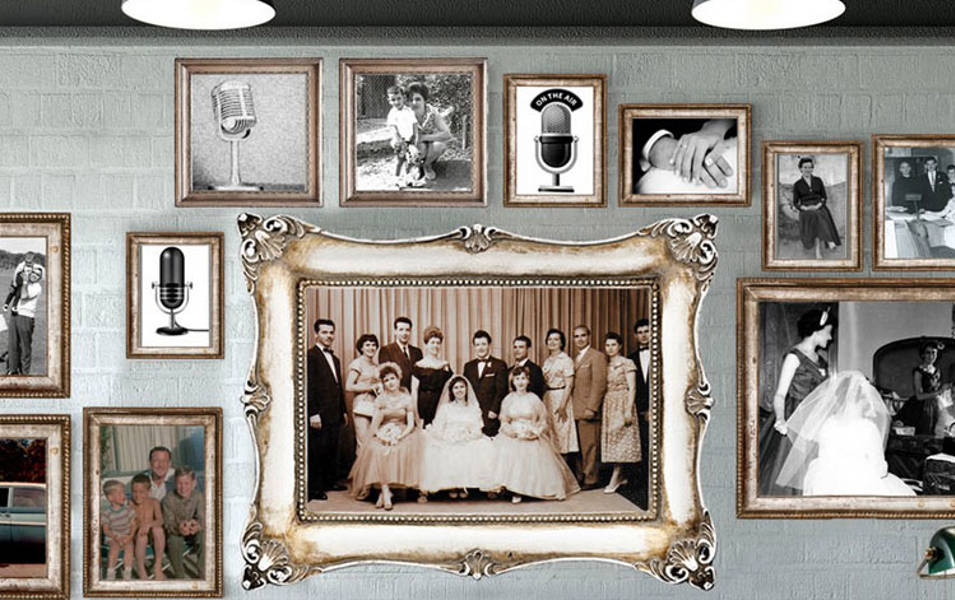
A Virtual Highlight Tour of McGill’s Virtual Museum of Greek Immigration to Canada
The Virtual Museum of Greek Immigration to Canada is one component of Immigrec, a multifaceted project on Greek diaspora undertaken by McGill University in Montreal as part of the first phase of the university’s new Center for the Study of Greek Immigration and Diaspora. The Stavros Niarchos Foundation (SNF) provided support for the project.
Over the years, SNF has provided support for a number of projects that seek to preserve archives and gather oral histories related to the Greek experience, including within the Greek diaspora. Immigrec is a standout project in its systematic efforts—a team of researchers worked for two years to conduct 431 interviews in cities around Canada—and in how it imagined sharing the results of those systematic efforts. The Virtual Museum platform makes, to borrow a term from one interviewee, a “mosaic” of perspectives on the Greek-Canadian experience easily accessible and perusable by the public.
As fitting for a project related to global diaspora, Immigrec is the result of an international collaborative effort. Joining McGill in the project are York University in Toronto, Simon Fraser University in British Columbia, and the University of Patras.
One of the best ways to get to know a new museum is through a guided highlight tour. And for a new virtual museum? A virtual highlight tour.
Join us for quick room-by-room tour of highlights at the Virtual Museum of Greek Immigration to Canada, then linger to explore on your own.
Room 1: Departures
Look for the suitcase at right.
Stamata Zoggou from Lefkada recalls the restless, excited environment in which Greeks were departing for new lives abroad. Hearing cries in the streets, she assumed that someone had died. “Nobody died, my child, nobody,” her mother told her. “It’s the wave. It’s the Greeks who’re leaving. They’re saying farewell to the homeland… and going to other places.”
Room 2: Arrivals
Look for the seated figure above and to the left of the birdcage.
“When I saw the polyester, I lost it.” Arrival in a new land involved surprises, not all pleasant. Viky Kompogianni was shocked to find how “far behind” fashion in Canada was in comparison to in her hometown of Kalamata.
Room 3: Labor
Look for the photo of a group of men with generous heads of hair in the top right corner.
Gerasimos Koutougos, who had been a lathe operator in Patras, started out working as a dishwasher upon his arrival in Canada. By the time he sat for this interview, he owned a chain of pizzerias that included 352 restaurants in 14 countries.
Room 4: Family Life
Look for the photo of a single woman, to the right of the photo of clasped hands.
It was far cry from online dating, but still better than getting married blind. Take a look at the photos exchanged in 1956 by Dimitris Vallianos and the future Aliki Vallianos so they could get to know one another a little better before marriage.
Room 5: Communities
Look for the yellowed newspaper front and center.
Paradoxically, the way George Margafas came to see all of Greece was by travelling to Canada. “It was like a nice, second Greek state.” There George, originally from Rhodes, saw Greeks from the Dodecanese, Kos, Symi, Halki, Crete, the Peloponnese, Epirus, Macedonia, Thrace, and the Ionian Islands. “This mosaic was a beauty.”
Room 6: Education
Look for the lower microphone to the left of the chalkboard.
“The only thing they care about is to wear a black shirt, drink tsikoudia, go to Crete every summer and dance.” An anonymous interviewee from Chania wades into a decision faced by many Greek parents in Canada: to have their children educated in Greek, to preserve a connection to their roots, or not, to avoid a risk of socially isolating themselves in their new homeland?
Room 7: Language
Look for the black-and-white photo between the two figures at right.
Steve Maragos, originally from Lefkada, explains how he might switch between English, Greek, and French in conversation depending on the context. And when the context is this interview, he uses all three.
Room 8: Politics
Look for the photograph of marchers with signs at upper left.
“Many a time my bed wouldn’t see me for days.” Vrisiis Mavrou Paidousi describes her active involvement in Greek politics, even from her new home in Montreal.
Room 9: Sociabilities
Look for the picture of the microphone at far left with “ON THE AIR” above it.
She may have been “the voice of Greece,” but she didn’t know Greek music. Marina Vlachopoulou Wilson recounts how her 21-year-old self, working at a radio station and steeped in the sounds of Led Zeppelin and Pink Floyd, came to discover Greek music through listener requests.